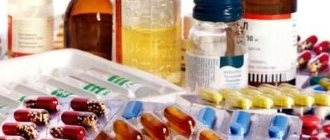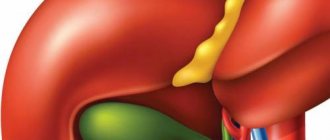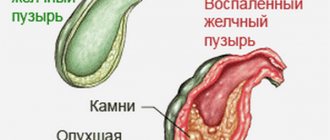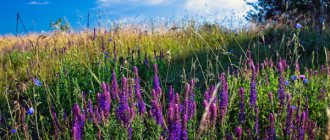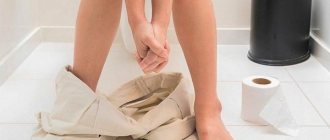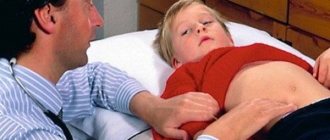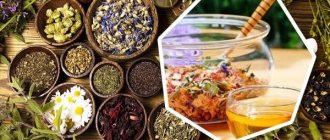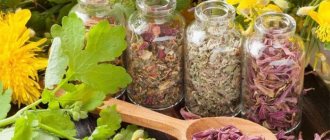Treatment of cholecystitis with folk remedies can be effective and safe. Complex therapy for this disease necessarily includes not only medications, but also proper nutrition, as well as the use of herbal infusions and decoctions. In addition, many plant extracts are used to make pharmaceutical preparations, which once again confirms their effectiveness. However, before starting treatment, it is worth undergoing an examination to ensure that the diagnosis is correct, as well as to clarify the form and cause of the disease.
The effectiveness of traditional medicine against cholecystitis
There is a huge variety of folk recipes that help get rid of the manifestations of cholecystitis. The disease is an acute or chronic inflammation of the walls of the gallbladder. The process can be associated with various factors and develop under the influence of cold, poor nutrition, viral or bacterial infection, as well as helminth infestation.
Depending on the conditions of cholecystitis, two types are distinguished:
- calculous - associated with the formation of stones in the cavity of the gallbladder;
- non-calculous - with this form there are no stones, and the disease manifests itself only by inflammation of the walls of the organ.
Cholecystitis is a disease for which treatment at home is justified. The main goal of therapy is to normalize the outflow of bile through the biliary tract, since they can be compressed by inflamed tissues. In addition, this secretion becomes thicker and does not pass well through the ducts into the duodenum. Thick bile accumulates in the cavity of the gallbladder and can precipitate, which is the first degree of gallstone disease.
Treatment for calculous and acalculous cholecystitis will differ. In the first case, it is important not only to normalize the outflow of bile, but also to get rid of its cause - stones in the cavity of the gallbladder. There are pharmaceutical preparations and herbal extracts that provoke the resorption of stones, but in advanced cases, traditional methods may be ineffective. Large stones are not amenable to medication and can only be removed on the operating table. If chronic cholecystitis occurs due to poor nutrition, it can be easily cured at home.
Proper nutrition is the basis for the treatment of cholecystitis
Contraindications for the treatment of cholecystitis with herbs
Herbal medicine is contraindicated if:
- The patient has allergic reactions to the components of the preparation.
- The patient has allergic reactions that occurred during treatment with phytotherapeutic drugs.
- As the only therapy for severe conditions, such as severe pain, dyspeptic and intoxication syndrome.
- In case of incomplete examination, when the diagnosis of chronic cholecystitis must be differentiated from other diseases of the gastrointestinal tract and when acute cholecystitis is suspected!!!
- With frequent recurrent biliary colic, when, despite the absence of an acute process, surgical intervention may be required.
Herbal medicine can be used, but with caution:
- For self-treatment with an established diagnosis of chronic cholecystitis.
- If the patient's condition worsens. Only a doctor will be able to tell what is causing the deterioration in a given patient and make the necessary decision on further treatment tactics. But remember, seek medical help as soon as possible if your condition worsens!
- During pregnancy, it is necessary to individually select herbal medicine depending on the duration of pregnancy and concomitant diseases.
- When breastfeeding, I also recommend not to select herbs on your own, but to consult your doctor, since all herbs pass into the baby’s body through breast milk.
Foods that help with an inflamed gallbladder
Diet is the main condition for recovery from inflammation of the gallbladder. Cholecystitis is often caused by eating unhealthy foods or eating irregularly. Its main reason is a large amount of animal fats, which form cholesterol deposits. In addition, an abundance of fatty foods disrupts the processes of natural secretion and outflow of bile. It is this secretion that is involved in the emulsification and breakdown of fat in the intestines, and is produced in response to food entering the stomach.
Regardless of the method of treating gallbladder inflammation, it is important to completely reconsider your diet and create a correct diet. Treatment of cholecystitis at home should begin with proper nutrition. Since many products have anti-inflammatory and choleretic properties, they become mandatory for consumption. For any form of cholecystitis, doctors recommend eating as follows:
Dissolving gallstones with folk remedies
- divide the daily portion of food into 5-6 meals and eat it every 2 hours;
- drink at least 2 liters of water a day (it helps to dilute bile and normalizes its outflow), but do not wash it down with food, but drink it between meals;
- exclude fats of animal origin, especially during an exacerbation - they can provoke the formation of cholesterol gallstones;
- eat fresh fruits and vegetables, as well as juices from them - these products cleanse the gallbladder;
- do not exceed the permissible calorie intake - to process large amounts of food, the liver must produce bile in increased quantities, which aggravates the disease;
- prefer lean first courses, cereals, boiled or stewed vegetables, and choose only low-fat varieties of meat and fish;
- completely avoid alcoholic and carbonated drinks, strong coffee and tea - they can be replaced with natural herbal infusions.
In case of malnutrition, cholecystitis often occurs in combination with other diseases. The inflammatory process spreads to the rest of the digestive tract, and the patient is diagnosed with gastritis, pancreatitis, hepatitis or intestinal diseases. For all these pathologies, it is recommended to normalize the diet, and then begin treatment with medications or traditional methods. Mild inflammation of the gallbladder can be cured solely with diet, without taking additional medications.
How is herbal medicine useful?
With cholecystitis, there is stagnation of bile in the organ, which can be overcome by decoctions of choleretic plants. To relieve spasms of the biliary tract, herbs that have an antispasmodic effect are used.
The development of inflammatory processes is stopped by agents that have antimicrobial, antiprotozoal and antibacterial effects, because the infection can spread further.
In the presence of gallstones, infusions with plants that have a litholytic effect are recommended.
And hepatoprotective agents will make the liver function normally.
Doctors do not recommend trying to dissolve gallstones on your own, since the smallest particles can damage internal organs.
Useful plants
To optimize the process of bile formation and its removal, you can take decoctions from the following plants:
- common tansy;
- birch leaves;
- peppermint;
- columns of corn;
- barberry;
- sandy immortelle.
They are divided into two groups: choleretics and cholekinetics. The former enhance the outflow of bile due to an increase in the level of water content in it (mint and birch leaves). And the latter increase the tone of the gallbladder and the pathways through which fluid leaves the body (tansy, corn). Plants such as barberry, sandy immortelle and Chinese aerum have mixed effects, so you need to be especially careful when consuming them.
Cholecystitis often manifests itself as spasmodic attacks, which can be alleviated by effective antispasmodics: cumin, chamomile, anise, fragrant dill, lemon balm, cinquefoil, lily of the valley, calamus, rhombifolia.
Properties of various plants
Treatment of cholecystitis at home is possible if there are no contraindications. To do this, it is better to use herbs available for sale at the pharmacy, or those that grow in nearby forests and fields if you live in an ecologically clean area.
Chamomile flowers are known to help with a variety of ailments. Cholecystitis is no exception. You can prepare preparations in which chamomile will be one of the components - decoctions, tinctures, medicinal teas. Some even practice an enema from a warm decoction of this plant.
Immortelle
At every step you can find plantain. It has a strong anti-inflammatory effect, reduces the level of cholesterol, which is part of the stones found in the gall bladder. The seeds of this plant can be added to food, but it is important to ensure that the amount does not exceed more than 4 tablespoons per day. Patients with increased blood clots and a sick stomach should not prepare decoctions from this herb, but for everyone else they will be an effective remedy.
Chicory has a beneficial effect on the functionality of the hepatobiliary system as a whole. You can use roots, seeds and flowers, and many even drink freshly squeezed juice. It is worth replacing regular coffee with chicory in the morning - the taste of these products is practically no different.
Milk thistle restores liver cells (hepatocytes) and has a powerful anti-inflammatory effect, so it can cure cholecystitis like no other plant material. To prepare decoctions, crushed milk thistle seeds and roots are used. You can use oil, but its effectiveness is delayed in time.
The best herbs for cholecystitis:
- Immortelle. Preparing the decoction is not difficult: we take the crushed flowers of the raw material, add corn silk and St. John's wort. Boil water in a proportion of 200 ml, add one tablespoon of the mixture to it. Cook the mixture for about 30 minutes, cool. Be sure to filter it. The decoction should be taken 20 minutes before lunch or dinner, one-third of a 200 ml glass.
- St. John's wort. Method for preparing the decoction: take a tablespoon of raw materials, pour boiling water into 20 ml. Leave for 20 minutes, strain the resulting broth. Take 20 minutes before lunch or dinner, strained, 0.25 regular glasses per 200 ml.
St. John's wort and immortelle have a choleretic and anti-inflammatory effect on the body.
- Mint. Mint decoctions relieve pain and are used to treat the digestive system. Mint infusions are used for heartburn and belching, and for intestinal spasms. Mint has an anti-inflammatory effect and is a choleretic drug. Recipes for mint decoctions are simple: 1 tablespoon of the raw material is poured with boiling water (200 ml). The composition is cooled and filtered, you can drink half a glass before meals 20 minutes twice a day.
- Chamomile. Chamomile coats the intestines and relieves spasms. It can reduce irritation and relieve inflammation. In the treatment of the gastrointestinal tract, chamomile is used for gastritis, diarrhea, colitis, as well as for diseases of the gallbladder. Chamomile is sold in pharmacies in the form of bags in which finished raw materials are packaged. The bags are brewed according to the principle of simple tea: just put 1 bag in a mug or glass and pour boiling water over it. Cool and drink three times a day before meals.
Choleretic herbal remedies are represented by the following herbs, in addition to those listed above:
- oregano;
- birch, wormwood, yarrow – ready-made collection;
- calendula, knotweed, oregano, mint – ready-made collection;
- dandelion;
- sage as part of the collection;
- lemon balm as part of the preparations;
- horsetail as part of the collection.
Oregano and sage: recipes
Oregano
Recipe for treatment with oregano: pour 1 tablespoon of the original raw material with boiling water in the proportion of one glass (20 ml), leave the composition for about 2 hours. Consume 15 minutes before meals, 1.4 glasses three times a day.
Sage treatment recipe:
Pour 2 tablespoons of sage into 1 glass of boiled water. Infuse the mixture in a water bath for about half an hour, then cool for 15 minutes and strain. The decoction should be consumed 15 minutes before meals, 1 tablespoon three times a day.
Herbs for cholecystitis are freely sold in city pharmacies. They do not require prescriptions.
Oats in the treatment of cholecystitis
If there is no reason for urgent surgical intervention, treatment of cholecystitis with herbs gives good results. But oats, widely used for gastrointestinal pathologies, are also effective. A decoction and infusion of oats are isolated. The decoction is used for intestinal diseases, cholecystitis in children and adults.
Method of preparing oats (decoction):
The oatmeal is soaked in water at room temperature, the mixture sits for one hour. After this, the oatmeal is washed and boiled in two glasses of water for about 10 minutes. Honey is added to the broth in the proportion of 2 tablespoons, the mixture is cooked for another 3 minutes. The first composition is ready. The second composition is prepared as follows: oatmeal (1 glass) is poured with 1 liter of water, boiled for 15 minutes until it forms a liquid jelly. You can add milk to the broth. The decoction is ready. After cooling, mix both compositions together, dissolving honey in them in a ratio of 3 tablespoons. Take a glass of the decoction several times a day.
Oat infusion is used as a choleretic agent. Various methods are used to prepare the infusion. One of them:
A glass of oats is filled with 1 liter of water and evaporated to ¼ volume. The infusion is taken up to 4 times a day, 0.5 tbsp.
Hepatoprotective plants
Herbs with hepatoprotective action include milk thistle, which contains silymarin (the component is the basis of the pharmaceutical preparations “Karsil” and “Legalon”).
Chicory is another good hepatoprotective agent for the treatment of cholecystitis. It is part of many chemical medicines.
Another means of hepatoprotective action is dandelion officinalis (found in the medicine “Essentiale”).
Choleretic herbs
Choleretic plants also include:
- corn silk;
- tansy;
- centaury;
- mint (pepper);
- barberry;
- birch leaves.
All these choleretic plants must be drunk in strict proportions and adhere to a diet. They are divided into cholekinetics (they force the organ to contract and regulate the functioning of all pathways) and choleretics (increase the flow of bile).
Antispasmodic plants
This group of herbs includes mainly umbrella plants (some of them are considered poisonous):
- Anise;
- Fennel; caraway;
- Dill;
- Chamomile;
- Goose cinquefoil;
- Cottonweed;
- St. John's wort;
- Henbane (with caution);
- Datura (with caution);
The last two herbs belong to the nightshade family, they are considered poisonous, they can only be taken as prescribed by a doctor and drunk in strictly specified proportions. Treatment with the above plants is effective for cholecystitis, and the herbal components have a mild antispasmodic effect.
Bitter herbs
Treatment with these plants stimulates the gland and affects secretion. These herbs include:
- sagebrush;
- calamus;
- dandelion;
- watch.
In pharmacy kiosks, these herbs in alcohol are called “bitter tincture.”
Tea mushroom
Kombucha became famous back in the nineteenth century as an indispensable remedy for various diseases. Moreover, it has been proven that kombucha not only helps with various forms of cholecystitis, but is also useful for intestinal diseases and atherosclerosis.
Research has confirmed that kombucha has antimicrobial effects and is effective in treating gallbladder and duct diseases (especially in active people).
By choosing kombucha when treating inflammatory processes in the biliary tract, you can speed up the healing process. Many housewives grow kombucha at home and add it to various traditional medicine recipes. To do this, they purchase a medusomycete, immerse it in sweet and cold tea and wait for it to ripen.
Basically, kombucha is prepared for about 5-7 days in the form of a tincture and taken before meals up to 4 times a day, half a glass.
Treatment with tincture with the addition of calendula and herbal tea
In case of chronic disease, you should regularly drink tincture from the herbal collection:
- Barberry (bast);
- Common dandelion root;
- Silver birch (leaves);
- Dill;
- Immortelle inflorescences;
- Calendula flowers;
- Common bedstraw herbs.
It’s simple to prepare the tincture: you need to take one tablespoon from all the plants (herbs in equal proportions), put it in a 300 ml container (not iron!), then pour boiling water over it, cover and infuse for about an hour. After this, the collection needs to be simmered in a water bath for about half an hour, cooled and strained, and brought to the original amount (300 ml). You need to drink this mixture with the addition of calendula, one-third of the container three times a day, half an hour before meals.
Sometimes even ordinary tea from calendula inflorescences becomes a good preventive measure against the formation of stones in the bile ducts. It has been proven that treatment with calendula infusions is effective for cholecystitis, but herbalists consider this plant to be an ambulance for pancreatitis and cholecystitis. You can prepare the medicine at home. To do this, you need to pour a tablespoon of calendula flowers with half a glass of vodka and leave for about two weeks.
For inflammation of the pancreas, alcohol tinctures are generally taken, but even a regular hot calendula drink will help ease the process and be an excellent preventive measure. Also, calendula flowers, motherwort and immortelle herbs (in equal quantities) in the form of hot tea will help with the chronic form of the disease. Green tea with these herbs will be an excellent addition to the main treatment.
Cleansing the gallbladder using traditional methods
Exacerbation of cholecystitis can be caused by excessive secretion of bile and its accumulation in the gallbladder. In this case, it is necessary to free it from excess contents, otherwise the inflammatory process will continue to progress. Pharmacies sell special medications that have a choleretic effect, but they can be replaced with one of the simple products.
- Olive oil stimulates the flow of bile through the bile ducts. It is drunk three times a day before meals, you can start with 1 teaspoon. To enhance the effect, drink it with fresh apple or pineapple juice. The cleansing course lasts 3 days.
- For cholecystitis that is not accompanied by high levels of cholesterol in the blood, you can treat it with raw chicken egg yolks. Every morning on an empty stomach, drink 2 eggs, and the first meal should be half an hour later. This product should be used with caution as it may contain parasite larvae and eggs.
- No less effective is cleansing with rosehip decoction. Two tablespoons of the crushed root of this plant are poured into a glass of water and brought to a boil. The medicine should be taken throughout the day; you can additionally eat chicken egg yolks in the morning.
- Fresh black radish juice is another recipe that stimulates the flow of bile. It is squeezed out of the raw product and taken 50 ml per day. To improve the taste, you can add a small amount of honey. The drug is contraindicated for peptic ulcers of the digestive tract.
Medicinal herbs are taken separately or as part of complex preparations
Treatment of cholecystitis with folk remedies can be no less effective than taking expensive drugs. During the course of therapy, you should pay attention to your well-being. Pain and other symptoms should gradually subside, and their exacerbation indicates that the chosen medication must be stopped.
Herbs in the treatment of various forms of cholecystitis
Each patient’s disease progresses differently, so the composition of the herbal mixture for the treatment of chronic cholecystitis is selected individually. Its tasks are to reduce pain, improve digestion, and stop the inflammatory process. The intensity and duration of taking herbs depends on the severity of the condition, the presence of concomitant diseases, the age and well-being of the patient.
Cholecystitis occurs in 85% of people suffering from pancreatitis. Thanks to herbal medicine, congestion in the gallbladder is eliminated, and there is an anti-inflammatory effect on the entire body.
Beneficial properties of medicinal herbs:
- Plants with choleretic properties are necessary to eliminate bile stagnation.
- The antispasmodic effect helps to relax the bile ducts in case of cholecystitis.
- Herbs with antibacterial, antimicrobial, antiprotozoal effects are needed to combat pathogens.
- Hepatoprotective folk remedies are useful for restoring the liver.
- Herbs with litholic properties are needed to remove stones.
Doctors recommend caution when using all medications that dissolve gallstones. This procedure is not safe. Small fragments can clog ducts and injure organs, which will significantly worsen the patient’s condition.
Effective remedies against cholecystitis
The most effective remedies for the treatment of cholecystitis, which are recommended by traditional medicine specialists, should not harm the body. They affect the processes of bile outflow, have antispasmodic, anti-inflammatory and analgesic effects. In the initial stages, cholecystitis can be completely cured if you take one of the useful folk remedies:
- a day they eat half a glass of the mixture, which is obtained by infusing 500 g of oats with a liter of boiling water;
- freshly squeezed cabbage juice is another remedy for folk treatment of gallbladder diseases; you need to drink 500 ml in small portions per day;
- half a glass of a mixture of sunflower or olive oil in combination with grapefruit juice (in equal proportions) is drunk 2 hours after the last meal;
- a decoction of peeled crushed beets - keep it over low heat until thickened, and then take a quarter glass three times a day.
Treatment of chronic cholecystitis is a long process. Even pharmaceutical drugs cannot relieve the symptoms of this disease immediately after taking them, and natural remedies contain active ingredients in lower concentrations. They have the advantage of being accessible and safe, and they rarely cause side effects. However, before starting treatment for inflammation, you should consult a doctor and find out about all the nuances of the disease. Those drugs that are completely safe for adults can cause exacerbation of cholecystitis in children; the presence of other pathologies in the anamnesis should also be taken into account.
Antispasmodic herbs
This group of plants includes anise, dill, St. John's wort, chamomile, fennel, henbane, belladonna, datura, cudweed, wormwood, bloodroot, and dandelion root.
Attention! Henbane and datura are poisonous plants. They must be taken with great caution.
Antispasmodics help relax the bile ducts. They facilitate the passage of bile through the ducts and eliminate pain. Thanks to the alkaloids included in the herbs, the muscle tone of the gallbladder decreases. The diuretic effect helps relieve swelling.
A universal and affordable remedy for the treatment of cholecystitis is chamomile. It copes well with spasms and inflammation. The herb is used independently or as part of preparations, infusions and teas are prepared. For one tablespoon of dry raw materials, take 250 ml of boiling water. The resulting infusion is drunk for at least 2 months.
After a course of treatment for cholecystitis, it is imperative to help the body recover. There are several ways to normalize the functioning of the pancreas and gallbladder:
- Take string, mint, elecampane root in a ratio of 1:1:2. Mix the ingredients well. For 200 ml of boiling water you need a teaspoon of raw materials. Infuse the herbs in a thermos overnight. Drink twice in the morning and in the evening after meals. The course of treatment takes three months.
- Brew calendula flowers in a thermos. To do this, take a tablespoon of raw material per 250 ml of boiling water and leave for 10 hours. Drink 1/3 glass before meals for a month.
- Mix 100 g of oats with 1.5 liters of water. Simmer for one hour over low heat, stirring the mixture with a wooden spoon all this time. The broth must be filtered and cooled, and drunk 4 times a day, 100 ml. Only enamel dishes are suitable for cooking, and raw oats are used as raw materials.
- Pour 5 g of immortelle with cold water. Infuse the herb for 24 hours. Strain and drink 80 ml before meals. The duration of treatment is two months. Then you need to take a break of two weeks. For prevention, reduce the dose by half.
In the fight against cholecystitis, herbs are an excellent addition to medications. They act gently and do not disturb the natural microflora. The collections include plants that contain various biologically active substances. Thanks to this, treatment occurs in several directions at once.
Herbal preparations and decoctions for the treatment of cholecystitis
In the arsenal of traditional medicine, there are hundreds of recipes for herbal infusions, tinctures and decoctions, but it is important to know how to treat the disease so as not to harm the patient. Treatment of cholecystitis with herbs is the most gentle way to relieve pain and inflammation, as well as normalize the processes of secretion and outflow of bile. There are several varieties of such natural preparations that can be prepared at home:
- choleretic herbs for cholecystitis are very useful because they prevent its thickening in the cavity of the gallbladder and the formation of stones;
- anti-inflammatory herbal remedies - effectively relieve pain and inflammation;
- natural antibacterial drugs - indicated if the disease is caused by the activity of pathogenic bacteria.
Herbs for chronic cholecystitis can be the basis of treatment for this disease. They can be taken separately or combined with each other to increase effectiveness. It is also recommended to combine herbal components from different groups - this way they can act not only on the symptoms, but also on the causes of the disease.
If the gallbladder is inflamed, it is recommended to clean it using traditional methods.
- One spoon of corn silk is poured into a glass of boiling water and left for at least an hour. The infusion should be drunk during the day, and a fresh one should be brewed the next morning. This remedy stimulates the outflow of bile and normalizes the process of its secretion.
- Two tablespoons of dried crushed yarrow are brewed in 200 ml of boiling water. The mixture must then be strained, divided into 4 servings and drunk before each meal.
- Two tablespoons of sage are poured into 400 ml of boiling water and left for half an hour. The product is drunk several spoons every 2-3 hours. It relieves inflammatory processes in the gastrointestinal tract and gall bladder.
- A good remedy for cholecystitis is a complex choleretic preparation. Birch leaves, juniper fruits, wormwood and yarrow raw materials are mixed in equal proportions and crushed. One spoon of the mixture is poured into a glass of boiling water and simmered over low heat for 15–20 minutes. Then the broth is filtered and drunk a glass in the morning and evening.
- A mixture of St. John's wort, motherwort, immortelle and mint also has medicinal properties. For 1 liter of boiling water you will need 4 tablespoons of dry crushed raw materials. It is poured with boiling water and left in a thermos for at least 2 hours. You need to take half a glass three times a day. The drug is contraindicated in case of increased secretion of gastric juice.
Treating gallbladder inflammation at home is a lengthy but effective process. If the process is not caused by the formation of large stones or organ deformations, treatment with folk remedies will be no less useful than taking pharmaceutical medications. The course of therapy should begin with normalizing nutrition and cleansing the gallbladder cavity of excess contents. However, during periods of exacerbation of the disease, some medications may be contraindicated. It is also necessary to exclude the presence of inflammatory or ulcerative changes in the mucous membrane of the digestive tract. It is possible to completely get rid of cholecystitis at home, but treatment will take at least 2-4 weeks, unlike potent medications - some of them relieve inflammation immediately after administration.
Symptoms of acute and chronic cholecystitis
Acute and chronic forms of the disease are interconnected - the first, in the absence of therapeutic measures, inevitably turns into the second.
Acute cholecystitis is indicated by intense pain in the right hypochondrium, which can radiate to the collarbone or right shoulder. When you press on the area of the right hypochondrium, muscle tension and pain are felt. The patient complains of vomiting and dry mouth. The skin takes on a yellow tint. This condition is accompanied by bloating, belching and an increase in temperature 2-3 degrees above normal.
See also video about acute cholecystitis:
Chronic cholecystitis manifests itself somewhat differently. The pain on the right under the ribs is not sharp, but aching and dull (bilious colic with sharp pain only appears periodically). It does not disappear completely and usually appears 1-3 hours after the patient has eaten heavily. Fatty and fried foods are a key factor in provoking the disease.
Moving upward from the hypochondrium, the pain affects the right shoulder, neck and shoulder blade. The taste in the mouth becomes bitter, “iron.” Digestive system disorders manifest themselves in nausea, bloating, and stool disorders: diarrhea often alternates with constipation. Patients become irritable and cannot sleep peacefully.
How to cure cholecystitis at home?
Supporters of traditional methods of treatment often ask the question - how to cure cholecystitis at home. But cholecystitis is, first of all, an inflammatory process in the walls of the gallbladder, a vulnerable organ that is not very easy to treat. Yes, in most cases, treatment with medicinal plants for cholecystitis is effective, but you cannot limit yourself to only these remedies.
It will be possible to talk about complete elimination of the inflammatory process only if all possible treatment methods are used, including medications and diet.
When all therapeutic agents are used in combination, the pathology seems to be subjected to a massive attack by a variety of weapons - and inevitably retreats. If you try to cure yourself exclusively with home treatments, it takes a lot of precious time, during which the disease can develop dangerous complications.
Therefore, the answer to the question - how to treat cholecystitis at home - can only be one option. Treatment must be agreed with a doctor and include a set of measures: drug therapy, adherence to a therapeutic diet and taking herbal decoctions.
Taking oils for cholecystitis
Vegetable oils contain easy-to-digest fats that stimulate the elimination of excess bile from the body. Unrefined products are characterized by a higher concentration of nutrients. It is recommended to add it only to ready-made warm dishes, which ensures the preservation of healing micronutrients. The most popular way to use vegetable oils for medicinal purposes is to use them as salad dressing. According to the rules of the diet, the daily intake for calculous cholecystitis should not exceed 30 ml. If inflammation of the gallbladder is not accompanied by the formation of stones, then the dosage is increased to 50 ml.
Olive
It is considered the most optimal choice for patients with cholecystitis, as it has a pronounced choleretic effect. But this feature imposes a restriction on its use at certain stages of the development of the disease, although olive oil shows good results as a prophylactic against bile stagnation. Additional advantages include the presence of components that have an anti-inflammatory effect. The product is also able to reduce cholesterol levels in the blood, which helps prevent the formation of stones in the gall bladder and ducts.
The greatest benefits for the human body are noted when using a first cold-pressed product, characterized by a pleasant aroma, delicate greenish-yellow tint, and bright taste.
The oil is often used to flush the gallbladder. The procedure alleviates the course of the disease. It is carried out during the period of remission. A prerequisite is the absence of elevated temperature.
Linen
Oil is considered a storehouse of polyunsaturated fatty acids, among which Omega-3 and Omega-6 deserve special attention. The combination of potassium with vitamins ensures a decrease in cholesterol levels, which eliminates the possibility of the formation of stones in the gallbladder and ducts. The product retains its beneficial properties if it is not subjected to heat treatment. A prerequisite for the therapeutic use of flaxseed oil for cholecystitis is the combination of consuming the product with food intake. The daily norm should not exceed 3 tbsp. l.
Sea buckthorn
It is impossible to buy pure sea buckthorn oil in a pharmacy, since the products produced are often diluted with sunflower oil. The medicinal product is obtained only by self-squeezing. The healing properties are due to the presence of organic acids, tocopherols, phytosterols, tannins, vitamins and amino acids. For patients with cholecystitis, components that normalize cholesterol production, localize inflammation and accelerate regeneration processes are of particular value. At the same time, it is permissible to take the oil only if the pathology is chronic.
Milk thistle oil
One of the safest and most effective remedies, the use of which allows you to solve most of the problems that arise with cholecystitis. The action of the components of the composition is aimed at relieving spasms of smooth muscles, localizing inflammation, improving the outflow of bile, gradually destroying stones, and combating pathogenic organisms that provoke the development of the disease. Milk thistle oil therapy takes quite a long time, improvement occurs gradually. The disadvantages also include the impossibility of taking it in the acute stage.
How to treat?
What else do you need to know about such an issue as treating cholecystitis at home? If we intend to counter cholecystitis with herbal treatment, we should carefully study the properties of the chosen medicinal plants. Otherwise, instead of a therapeutic effect, you can get a life-threatening complication. Yes, we again remind you of herbs that have choleretic properties.
Due to the fact that cholecystitis in 90% of cases develops against the background of cholelithiasis, the risk of calculus (stone) shifting during herbal medicine is quite high.
This threatens to block the bile ducts and worsen the inflammatory process, up to the development of cholestasis (stagnation of bile) and ascites (accumulation of fluid in the abdominal cavity, dropsy). Therefore, we will try to choose plants that do not have a pronounced choleretic property:
- St. John's wort;
- birch leaves;
- barberry;
- corn silks.
This, of course, is not all that can be used to treat cholecystitis at home, but if you alternate the use of the recipes below, this will be quite enough.
